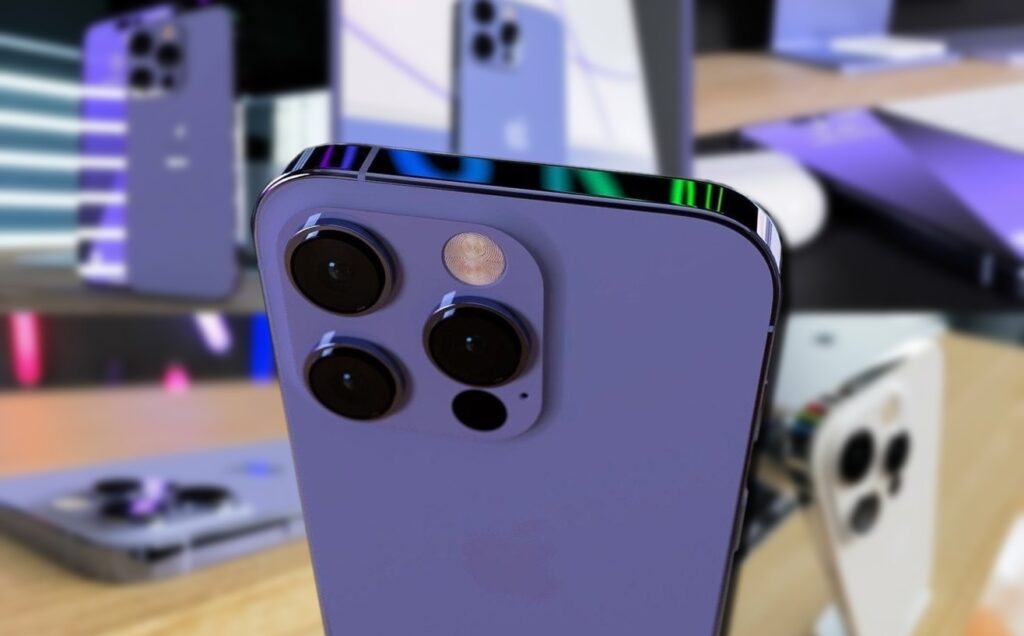Apple iPhone 14: Here’s all you need to know about Always-On Displays, and which iPhone models could get it in the future.
Always-On Display, or AoD is expected to be one of the major features coming to select models of iPhone 14 later this year. While those who have been using iPhones for a long time may be new to the term, Android users have enjoyed Always On Display for years.
In fact, Apple has made use of the technology in the past. Every Apple Watch since the Apple Watch Series 5 has had the feature and we can now expect it to come to the upcoming iPhones as well. But what is Always-On Display and how does it work? Why did Apple not enable the feature all these years and most importantly, will older iPhones get the feature? Let’s find out.
What is Always-On Display and how does it work?
Always-On Display allows select pixels on your phone’s screen to light up when it is off, to alert you of elements like the time, incoming calls, notifications, etc. The feature was made popular on Android years ago by phones like the Motorola Moto X series. When AoD is enabled, the majority of your phone’s screen remains off, not using any power, while a small portion of the pixels light up to show you information. Since the pixels that are off, are truly off, the feature doesn’t take a huge impact on your battery, despite it being on all day.
Apple is bringing the feature to iPhones that have two key technical specifications in their display panels – OLED (organic light emitting diode) and LTPO (low temperature polycrystalline oxide)
What are OLED panels?
The display panel on your smartphone is made up of many tiny pixels, however, it is how these pixels light up that differentiate between the two major types of screens in use on phones today – LCD panels and AMOLED/OLED panels.
LCD panels have backlights behind the screen that emits white light, and the backlight panel only works with the LCD panel because the liquid crystal panel cannot emit light. With OLED panels, each pixel is essentially, its own lighting source, using organic compounds to light up at various intensity levels depending on the current passed through it.
Due to this difference, OLED panels offer more minute customisation pixel-to-pixel. What does that mean? It basically means that every pixel in an OLED panel can be configured to be turned on or off, and even show any particular colour.
This allows manufacturers to implement Always-On Display on phones that do feature an OLED panel and these do offer controlled customisability of each individual pixel. The feature would be redundant on LCD displays because even if you want to show one single pixel in the middle of the screen “always on”, the entire backlight needs to be on the whole time, draining your battery very fast.
Apple didn’t make the switch to OLED panels until the iPhone X, which also featured a complete design change and the switch from TouchID to FaceID. However, it wasn’t until the iPhone 12 series that Apple made OLED mandatory across the series. The iPhone 11 series only had OLED panels on the Pro-models.
But now that OLED panels have come to all iPhones in the series for the last two generations, why don’t we still have Always-On display? The answer is Apple’s second requirement that we mentioned above – LTPO technology.
What are LTPO panels?
Putting an OLED panel alone on a phone should allow it to use Always-On Display (like so many Android phones out there). However, Apple likely wants to add AoD only to phones which feature both OLED and LTPO, yet another technology that helps save power.
An LTPO panel allows a display to precisely switch between very low and very high refresh rates based on the content on offer. Hence, when showing a stationary page on a website or your settings panel, an LTPO panel can drop the refresh rate way below the usual 60Hz (as low as 1Hz on the newer LTPO 2.0 panels), saving considerable battery.
Using LTPO panels in conjunction with OLED offers the lowest power consumption and therefore the least battery drain. This is because in addition to only selective pixels being on, LTPO allows the panel to drop its refresh rate as low as possible since you won’t virtually need anything above 1-10Hz to show the time and notifications.
Which iPhone models could we see get Always-On Display?
As we mentioned above, Apple is rumoured to bring Always-On Display only to phones which have both OLED + LTPO panels. The ‘Pro’ models of the iPhone 14 series are the top contenders for the feature but two of Apple’s current iPhones could also get AoD with an update in the future.
These are the iPhone 13 Pro and iPhone 13 Pro Max. The first iPhones to implement LTPO and OLED panels, last years iPhone 13 Pro-series phones offered the benefits of OLED displays like rich colours and deep blacks, as well as higher refresh rate up to 120Hz via Apple’s ProMotion feature. These two models should be able to get the feature with a future update.
However, other iPhone variants (including newer ones like the iPhone 13 mini and iPhone 13) are unlikely to get AoD support due to not featuring an LTPO panel, an OLED panel, or both.
We should have more information regarding Always-On Display and what devices it will support next week during WWDC 2022, where Apple is also expected to make the next iOS update official.

Source: indianexpress.com

